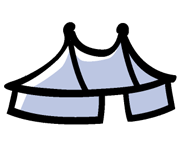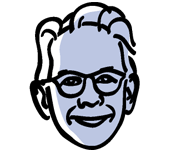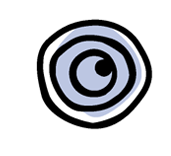La Terrasse2 novembre 2009
L’atelier du peintre
The new extravaganza by Cirque Plume conjures up the imaginative world of the painter. His works, his tools and his gestures are the ingredients of the show for which the circus often seems to be mere backdrop.
You enter the L’Atelier du peintre as if you were entering the painting by Velasquez entitled Las Meninas. A reproduction of the artist’s picture, positioned at the front of the stage, places the audience in the attitude of the person who is being looked at. It’s an allusion, and the troop of performers comes out to admire the artist’s efforts, recognising this or that spectator ! But everything is turned on its head just as quickly and suddenly we are plunged into the world of illusion, invited to contemplate a pictorial universe that begins to move gracefully. There are multiple references : you come across Manet or Ingres, Olympia or the Odalisque, even Jackson Pollock… No need to be an art historian, or understand private jokes about Rembrandt or Soulages in order to enjoy L’Atelier du peintre : you just need to give yourself up to the magic, let yourself be transported by a female nude who comes to life before our eyes, or a static sculpture that becomes the vital element in a romantic hand-to-hand balancing act. As always at Plume, the music is an integral part of the show.
Images and imagination give rhythm to the madness of the group.
Musicians, circus performers and actors blur the boundaries between genres, and the presence of some fuels that of others. The acts are linked together in a frenetic rhythm, punctuated by the clown-like appearance of "Daddy" Kudlak, a Monsieur Loyal figure who attempts to explain the world from a pictorial viewpoint, and who sometimes contrasts sharply with the contributions of his colleagues, in a series of sketches where painters and clowns are easily interchangeable. Images and imagination give rhythm to the madness if the group. Painting becomes a source of amusement. The performers mess about with colour, throwing litres of paint about, even firing it out of a gun ! Each performer pitches in, as in the finale where life takes shape in front of our eyes. But by devoting so much energy to painting, the acts stray from the circus and poetry that we usually associate with the work of Cirque Plume. There’s no showiness in the dance steps, no originality other than musical in the juggling, no element of surprise in the leaps on the trampoline. Only Kristina Dniprenko, on the German wheel, seems to defy gravity with virtuosity and grace. This multi-layered show imbues us with the gentle and charming madness of the group, backed up by disconcerting staging designs. The picture and the frame become the support structure for a moving representation of the artist’s imagination. When this, split down the middle, grabs hold of the characters in spite of themselves, it’s Courbet who reappears, making the picture the ideal space for all our fantasies…
Nathalie Yokel










